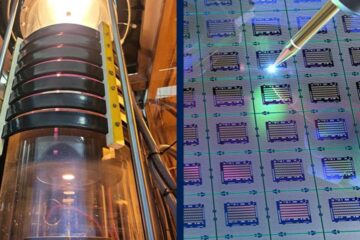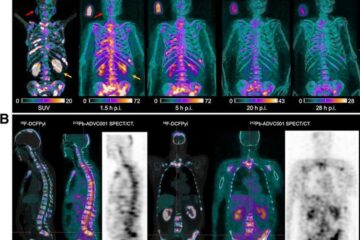Melbourne scientist overturns 30 year calcium dogma

A University of Melbourne research team has overturned 30 years of dogma on how a cell transports calcium, revealing potential insights into cancer and neuro-degenerative diseases.
Professor Mike Hubbard, Department of Paediatrics and School of Dental Science, will reveal his research in this area at the International Congress of Genetics, Melbourne on Thursday 10 July. He will also discuss the latest on their recent discovery of a new class of protein that they have linked to breast cancer and fertility.
Hubbard, a trained dentist and bio-medical researcher, is using proteomics to investigate the role of calcium and cell survival. When beginning this research, he knew that dental enamel cells process large amounts of calcium and have the unusual capacity to survive high concentrations of the stuff. This led to Hubbard adopting the dental enamel cell as his research model.
Calcium is a critical component of cell survival and function; too much or too little will kill a cell.
“Cells from major calcium-transporting tissues such as the kidney, gut and developing teeth, are likely to be informative about the cellular mechanisms used to handle calcium safely,” says Hubbard.
“Cancer cells thwart the system by being able to thrive with high concentrations of calcium. Knowledge of the calcium-handling machinery in normal cells should help our understanding of how cancer cells manage this feat,” he says.
By contrast, brain cells in people with neuro-degenerative diseases such as Alzhiemer’s are unusually susceptible to the toxic effects of excess calcium.
For the last 30 years scientists have been basing their research in this area on the assumption that calcium was actively transported across the cell via a specific a protein acting as a form of packhorse.
Hubbard and his dental enamel cells have now confirmed this dogmatic assumption to be false.
“Any drug development looking to block particular aspects of the calcium transport machinery would probably have failed based on the old assumption,” says Hubbard.
Hubbard’s alternative calcium transport system is based on the cell’s protein factory called the Endoplasmic Reticulum (ER). The ER can withstand high concentrations of calcium. Hubbard’s research suggests that the ER acts as a conduit for calcium from one side of the cell to the other.
New protein, new mystery
In the process of unravelling the conundrum of calcium transport, proteomics handed Hubbard and his team a second unexpected discovery in the form of a new protein. They have since found the protein abundant in just about every tissue of the body, but it is especially abundant in brain, lung and breast tumour cells.
The protein is also found in Drosophila, so is highly conserved, suggesting again that it has an important function. The more important the function of a protein or gene, the greater it tends to be conserved through evolution. Fruit flies without this protein are sterile.
Three international teams, including Hubbard’s, are now trying to pinpoint the role of this protein.
“We know it is important, but its exact role is proving hard to pin down. Every stone we turn over tells us it is an extremely important protein,”
Most of Hubbard’s research was done with the University of Otago, New Zealand. Hubbard’s team first reported the new protein in 1997. Prof Hubbard was appointed as Professorial Fellow, Oral and Facial Sciences, in the Department of Paediatrics and School of Dental Science, University of Melbourne in January 2003.
Media Contact
More Information:
http://uninews.unimelb.edu.au/view.php?articleID=747All latest news from the category: Life Sciences and Chemistry
Articles and reports from the Life Sciences and chemistry area deal with applied and basic research into modern biology, chemistry and human medicine.
Valuable information can be found on a range of life sciences fields including bacteriology, biochemistry, bionics, bioinformatics, biophysics, biotechnology, genetics, geobotany, human biology, marine biology, microbiology, molecular biology, cellular biology, zoology, bioinorganic chemistry, microchemistry and environmental chemistry.
Newest articles

Silicon Carbide Innovation Alliance to drive industrial-scale semiconductor work
Known for its ability to withstand extreme environments and high voltages, silicon carbide (SiC) is a semiconducting material made up of silicon and carbon atoms arranged into crystals that is…

New SPECT/CT technique shows impressive biomarker identification
…offers increased access for prostate cancer patients. A novel SPECT/CT acquisition method can accurately detect radiopharmaceutical biodistribution in a convenient manner for prostate cancer patients, opening the door for more…

How 3D printers can give robots a soft touch
Soft skin coverings and touch sensors have emerged as a promising feature for robots that are both safer and more intuitive for human interaction, but they are expensive and difficult…





















